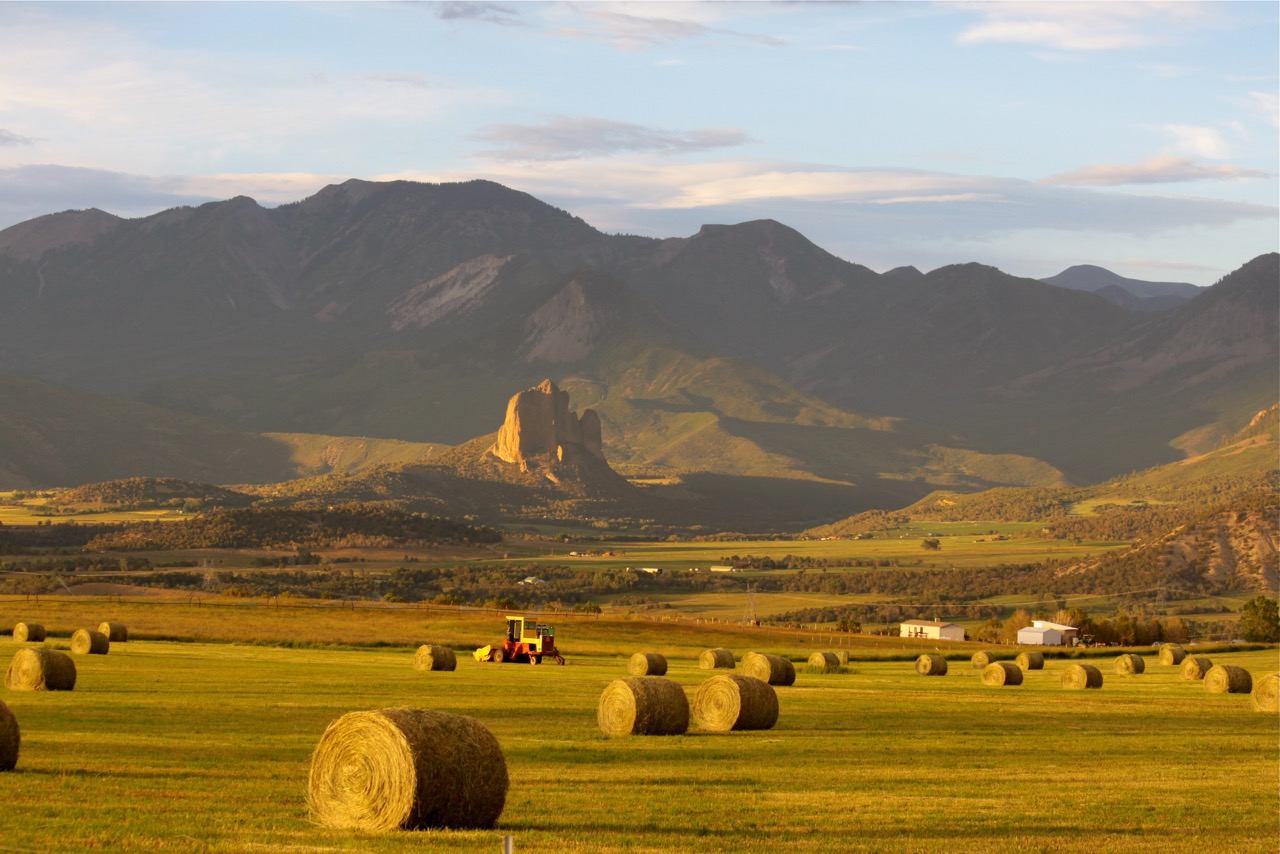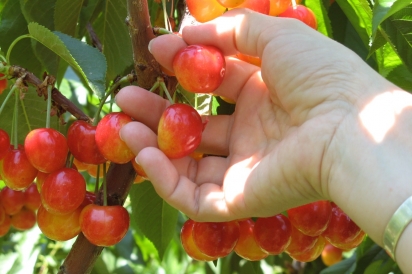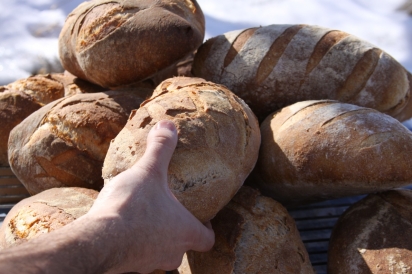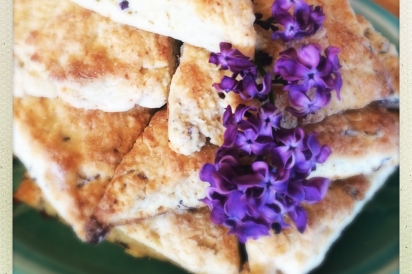Bountiful Valley: An ode to Colorado's North Fork Valley
Half a lifetime ago I set off from the East Coast seeking something. After seeing my soul for the first time in Big Bend’s desolate backcountry, falling in love with Utah’s red rocks, savoring the Oregon coast, and working a few years in northeastern Utah’s high desert, I haphazardly landed in the North Fork Valley of Western Colorado.
I helped friends move to Pitkin Mesa one dark August night, and woke to see this precious place below the West Elk Mountains shining in new rain. Walking around downtown Paonia for an hour, finding within one block a community radio station, a movie theater you could walk in barefoot, and a health food store called Sunnyside, I realized I had found what I was looking for, and only in that moment could name: community.
Poised to spend every penny I’d saved on a one-year graduate program in California, I decided instead to buy some land in this valley and grow my own food. A wise old tree once told me, Learn by doing. A wise old woman, only a few years older than I am now, helped me find this wonderful patch of old-growth juniper woodland with a canyon through it, and I planted my heart here.
In the twenty-five years since, I’ve cultivated a sustainable, ethicarian lifestyle, supported and nourished by all this valley offers so generously, including beauty wild and bucolic, fresh air, an astonishing range and quality of creative arts, solar energy support, great friends and neighbors, and the best food.
Streams trickle from wild mountains to feed the arteries of the North Fork and Lower Gunnison watersheds. Surrounded by this spectacular beauty, fertile land and clean water make optimal growing conditions for all kinds of food and adult beverages. The valley is Colorado’s organic capital, full of high-altitude wineries amid orchards, farms, ranches, and breweries, with our own Slow Food chapter.
I’m no subsistence farmer, but I do grow a lot of what I eat; I put up a few pints of tomato sauce, pickles, and jams each harvest season, pack the freezer with garden greens, soups, and sauces. I share the garden with deer, jays, chipmunks, finches; and compost the remains to make soil. I’ve learned to love bees, grow fruit, make kefir, grind my own paprika, and render lard. But I don’t need to grow my own food, because the abundant variety available in this valley is ample for anyone to live on, and the quality is beyond compare.
I don’t know as many hunters as I did when I decided that I only eat meat if I know who killed it. But living here, options have expanded from mostly fish, venison and elk, with the advent of Homestead Meats, Princess Beef, and other holistic ranches. I’ve also made friends who grow happy pigs, lambs, steers, and chickens following humane best practices. The local slaughterhouse motto: We pet ‘em, then shoot ‘em.
On the mesas where we live far from town, we dine at each others’ houses a lot. We share similar food values, love to cook, and enough of us grow food that any day of the year we can throw together a gourmet potluck, with homegrown bacon-wrapped jalapeño poppers, garden-fresh vichyssoise, home-baked bread, free range herb-roasted chicken, spicy spinach saag, and homemade peppermint ice cream. Or something like that. Maple-glazed pork loin, peach pie, endive salad, roasted-tomato bloody Marys. We are endlessly creative with our homegrown food.
If we don’t grow it ourselves, we can buy it locally. Any spring weekend I can drive to Small Potatoes Farm and buy greens, garden seeds, and brick-oven bread and scones; then stop at Zephyros Farm for tomato and pepper seedlings, swing by Delicious Orchards for a gallon of organic apple cider and some regional cheese, then stop at Lizzie’s Market for meat, honey, and local soap. In summer I can take houseguests on a winery tour, then to a world-class concert at the Blue Sage or free bluegrass at Pickin’ in the Park. Any fall weekend, I can stop at the farmers’ market in Hotchkiss or Crawford and load up on garlic, potatoes, peppers, tomatoes, squash or eggs.
If we want to eat out we have great choices: an exemplary farm-to table meal at the Living Farm Cafe; brunch at Pam’s Jammin', an intimate locavore feast with live music at Puesta del Sol winery; or during summer a field-to-table dinner. Among many options, the most charming might be a Kids’ Pasta Project dinner, prepared and served by school kids, which supports local nonprofits.
Years ago I asked that people give me a present only if I can eat it or wear it. I’ve received lots of socks, which I love, and lots of food: a pound of bacon, case of peaches, frozen chicken, a pound of bacon, fresh trout, plum jam, a pound of bacon… Here people trade a dozen eggs or a basket of plums for help moving a chair, give frozen elk steak or wild-caught halibut in thanks for a favor. Famous is different here: I rub shoulders with some of the finest food growers in the world, bioneers forging frontiers in holistic, sustainable agriculture on all fronts.
Every moment here is so beautiful. Living inside the kaleidoscope. This autumn is more glorious than any other. This summer was more poignant than last; each succeeding season exceeds the previous. Nothing is certain.
Friends, neighbors, farmers, ranchers, hunters, fisherfolk, and foodophiles who share common values around ethically produced wholesome foods, are at risk here from reckless BLM-sanctioned oil and gas development. The burgeoning ethicarian culture and sustainable agricultural economy that overlays and transcends this dinosaur economy is under constant assault. But that’s another story. “Now’s not the time or place to discuss that.” I’ve got a big bowl of tomatoes and a small basket of peppers clamoring for my culinary attention.
This article was made possible by Colorado Tourism Office.









